R.J. Stowell's Blog: rjsomeone, page 20
August 22, 2020
The Rolling Stones - Let It Bleed
The Rolling Stones psychedelic period lasted from 1966 through 1967 with only hints of the trend in the early parts of 1966. It could be said the era included Aftermath and the compilation Flowers, and culminating with Her Satanic Majesty's Request. Aftermath is an often overlooked and often flawless gem that remains one of my favorite Stones' LPs, but it's the late 1967's Beatles' inspired Satanic Majesties alongside the single "We Love You"/"Dandelion" that get the most critical attention, and usually not in a positive manner. It was this psychedelic era that inspired the Beatles on Sgt. Pepper and on the first world broadcast that featured "All You Need is Love," but the Beatles immersed themselves in and fit into the era effortlessly. The Stones' entry into the fray, I'll admit, seemed forced. Sometimes, that's exactly what it takes. The Stones' next LP was the back to basics but up the intensity Beggar's Banquet, and 50 years ago, Let It Bleed. It was with Beggar's Banquet that the Stones' truly became the bad boys of rock; they always were, but parading around in psychedelic paisley satin, didn't do the image justice.
Here are The Stones at their baddest, and filthiest. Just singing it, it doesn't sink in, but with the lyrics...
Published on August 22, 2020 07:10
August 20, 2020
The Rolling Stones - Dandelion
While the Beatles, even as far back as Rubber Soul, had the psychedelic vibe that came to fruition with Sgt. P and Magical Mystery, The Stones' were chastised for doing the same thing. Of course, Her Majesty's was no Pepper, but I still love the period and this video captures the spirit of psychedelia the way I hoped to do in Miles From Nowhere.
Published on August 20, 2020 15:01
He's walkin' through the clouds... 50 Years
 Lansdowne CrescentOn the morning of September 21, 1966, a Pan Am airliner from New York landed at Heathrow carrying among its passengers an American musician barely known in his own country and a complete stranger to England. His name was James Marshall Hendrix.
Lansdowne CrescentOn the morning of September 21, 1966, a Pan Am airliner from New York landed at Heathrow carrying among its passengers an American musician barely known in his own country and a complete stranger to England. His name was James Marshall Hendrix.On September 18, 1970, four years later, came a story of extreme urgency on the front page of the London Evening Examiner and a photo of Hendrix playing the Isle of Wight festival, only 18 days earlier. The text reported how Hendrix had died that morning in a hotel on Lansdowne Crescent in Notting Hill.
During those three years, 362 days living in London, Hendrix had conjured – with his vision and sense of sound, his personality and genius – the most extraordinary guitar music ever played, indeed the most remarkable soundscape ever created. Opinion varies only over the effect his music has on people: elation, fear, sexual stimulation, sublimation, disgust – all or none of these – but always drop-jawed amazement.
Nearly 50 years later, nothing really has changed. We ponder whether the true guitar master is Clapton or David Gilmour, Jack White or Steve Howe, but no one questions Jimi's impact, his mastery or sell-your-soul-to-the-devil virtuosity.
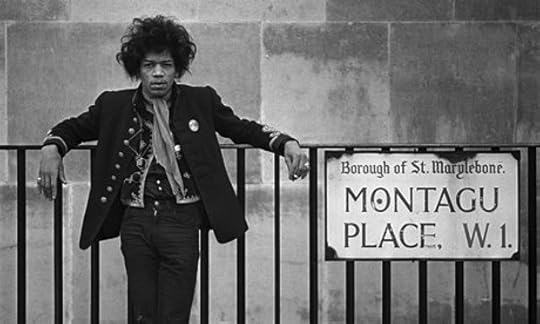
Published on August 20, 2020 05:28
August 18, 2020
Isle of Wight Festival - 50 Years Ago
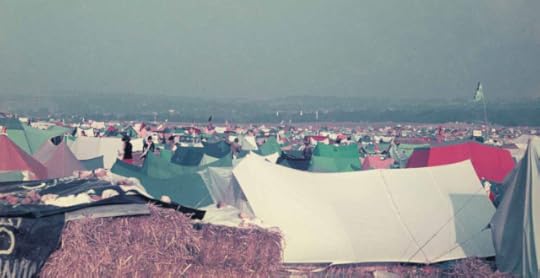
In my novel Miles From Nowhere, our narrator makes a pilgrimage to Woodstock to see his hero, Jimi Hendrix. Like others before me, I have reported and romanticized the festival as an accident of enthusiasm and chaos symbolizing the Hippie era. The following year, though, would be the third of three concerts in England at the Isle of Wight. Three years in a row, thousands of young people flocked to the small island community causing Parliament to pass a special act that would prevent unlicensed gatherings of more than 5,000 people.
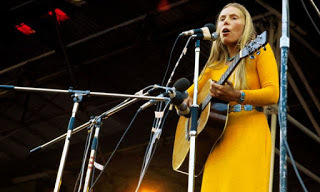 The festival was the brainchild of the Foulk brothers who saw a gap in the market for a large rock festival in the U.K. The first event, held on August 31 and September 1, 1968, featured the American psychedelic rock band Jefferson Airplane as headliners, with support from Arthur Brown, Fairport Convention, and many others. It was considered a success with an attendance of 10,000!
The festival was the brainchild of the Foulk brothers who saw a gap in the market for a large rock festival in the U.K. The first event, held on August 31 and September 1, 1968, featured the American psychedelic rock band Jefferson Airplane as headliners, with support from Arthur Brown, Fairport Convention, and many others. It was considered a success with an attendance of 10,000!The 1969 festival was much larger with an attendance of about 150,000 mainly due to the promoters securing Bob Dylan to perform. Dylan had been recovering from a debilitating motorbike accident in 1966 and was living in New York's Catskill Mountains, not far from Woodstock. However, Dylan was a no-show at the Woodstock festival in '69, instead headlining the Isle of Wight Festival two weeks later.
The 1970 iteration holds the Guinness World Record for the biggest concert of all time, somewhere between 600 and 700,000 attendees! The five-day event featured a myriad of artists that included Jimi Hendrix, the Who and Joan Baez, straight out of Woodstock, the Moody Blues, Chicago, Leonard Cohen, jazzman Miles Davis, Procol Harem, Ten Years After, Emerson Lake and Palmer, Sly and the Family Stone and Joni Mitchell, who sang her tribute to Woodstock (she wasn't at Woodstock, opting instead to do the Dick Cavett Show. While a success, the enormity of the event and its logistics caused promoter Ron Foulk to say, "This is the last festival, enough is enough. It began as a beautiful dream, but it has got out of control and become a monster. "
The festival was filmed by a 35mm film crew under the direction of [future] Academy Award-winning director Murray Lerner who directed the Oscar-nominated documentary Festival of the Newport Folk Festival. In addition to this film, Lerner has created full-length films focused on performances by individual artists at the 1970 festival. To date, there have been individual films of The Who, Jimi Hendrix, Miles Davis, Emerson, Lake & Palmer, The Moody Blues, Free, Leonard Cohen and Jethro Tull.
My novels take as their inspiration my experiences, those of others, and the research I've done over a career that began in the late 70s working as an intern for the L.A. Weekly. While I write fiction, there's not a thing within the pages that isn't the truth. Here's a glimpse into the festival in my novel, Calif.:
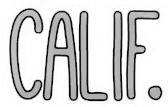 Daisy Lane in Her Journal: The atmosphere was fantastic, so electric. I was oblivious to the trouble on the hill and just enjoyed the peace and love that I felt around me. Trying to phone home was torture, though, lines a mile long. The other really horrible experience was the Johnnie on the Spots; well, the lack of them. The showers weren’t much better; they were like big tents with no curtains or privacy and only cold water. Didn’t matter though, the weather was great and I had the time of my life being away with my friends listening to amazing bands, The Who, Hendrix and ‘love of my life’ Leonard Cohen, and we were free of parents for the first time ever! And Joni.
Daisy Lane in Her Journal: The atmosphere was fantastic, so electric. I was oblivious to the trouble on the hill and just enjoyed the peace and love that I felt around me. Trying to phone home was torture, though, lines a mile long. The other really horrible experience was the Johnnie on the Spots; well, the lack of them. The showers weren’t much better; they were like big tents with no curtains or privacy and only cold water. Didn’t matter though, the weather was great and I had the time of my life being away with my friends listening to amazing bands, The Who, Hendrix and ‘love of my life’ Leonard Cohen, and we were free of parents for the first time ever! And Joni.
Click on the sidebar link to order your copy of Calif. Read it for free on Kindle Unlimited, which is offering two months free with no obligations. Support your writer friends.
Published on August 18, 2020 05:19
August 16, 2020
We'll Be Right Back...
AM is officially on vacation. We're off to the Shore. Please don't forget about us. We will be back on the 17th! In the meantime, get out the portable hi-fi and a good book.


Published on August 16, 2020 05:11
August 8, 2020
Adding to the List - Progressive Rock
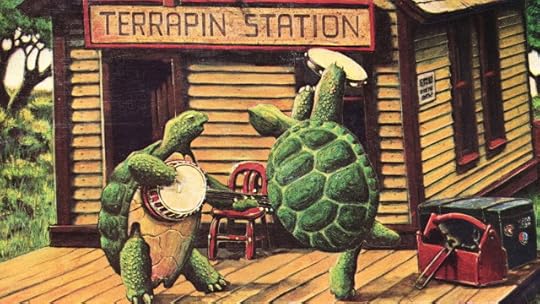 It's more a tradition than a policy that AM look only positively on what is reviewed. I post about the core of a band's halcyon days. Led Zeppelin's treatment, for example, starts atLZ1 and continues through Physical Graffiti with just a smattering of Presenceand In Through the Out Door. For ELP, I don’t mention Love Beach at all (and act like it doesn't exist). Pink Floyd's The Final Cut – I just leave it alone, often referring to it and The Wall as Roger Waters and Guests. That's about as derogatory as it gets.
It's more a tradition than a policy that AM look only positively on what is reviewed. I post about the core of a band's halcyon days. Led Zeppelin's treatment, for example, starts atLZ1 and continues through Physical Graffiti with just a smattering of Presenceand In Through the Out Door. For ELP, I don’t mention Love Beach at all (and act like it doesn't exist). Pink Floyd's The Final Cut – I just leave it alone, often referring to it and The Wall as Roger Waters and Guests. That's about as derogatory as it gets.So, what to do when an LP is simply sublime on one side and just yuck on the other? Such is the case with the Grateful Dead's Terrapin Station. Side One is not a total loss, particularly "Estimated Prophet," but "Dancin in the Streets" is simply awful (amazing that the Jagger/Bowie version is worse!). Mostly I pretend there is no Side One and move on to the 16-minute title track on the flip side.
When a few months back I listed the ten greatest prog LPs, I excluded Zappa (I tend to look at the Mothers as psychedelia rather than prog), which left ten British LPs. Face it, prog was, in its classic days, a British venture (and please don’t say Styx or I'll have one of those little throw-ups in my mouth). That said, The "Terrapin Station" Suite is among the best-produced prog pieces out there. Wait, the Dead is prog now?
Back before their mid-70s hiatus, I was listening almost exclusively to progressive rock – add in a little Led Zeppelin and Bowie, but prog was the focus. I stumbled across Grateful Dead at the Mars Hotel and it fit very nicely into my ’74 groove. "Unbroken Chain" was as proggy as Marillion or Can, so it didn't surprise me the first time I heard "Terrapin Station" in 1977. If you have never heard it, you're lucky – I wish that I could hear it again for the first time. Robert Hunter's literary book and Garcia's melody and voice are only the core of a prog masterpiece that utilized a half-dozen British studios from Abbey Road to Air to Trident to achieve the nuanced layering of tracks that include a full orchestra and choir (the core of the production was at Sound City in Van Nuys).
Each section of "Terrapin Station" begins with an invocation to the muse who is asked to hold back despair. With that, Hunter is off into verse that evokes the early night sky and a million crickets. There are metaphor and simile and assonance and allegory, and the title itself suggests Native American origin mythology in which a turtle carries the earth on its back.
The first part, "Lady with a Fan," is based on a traditional English folk tune called "The Lady of Carlisle" and features a theme of seduction and foolish bravado with an intricate harmonized guitar lead in between Garcia-led verses. The next three sections are more upbeat and climatic while pleasant and melodic and reeking of fairy tale. During "Terrapin Transit" the jam breaks into a psychedelic motif with synths, bass and percussion by Mickey Hart, while "Terrapin Flyer" features lush production over the percussive motifs. "Refrain" includes an opera-like chorus as the final act of our adventure. The suite was actually Part 1 of a two-part composition, the second of which was never recorded or performed by the Grateful Dead. "Terrapin Station" is a love letter to the art of storytelling and the muse that lives within us all. It is one of the band's shining moments, and one of prog's, as well.
Go back and explore my best of list on prog and find that while I stand behind it, just how many times can one listen to "Close to the Edge." Albeit a lot, I save it now for when I am truly in the mood and able to listen - then it will make me cry, but over the years I've expanded those prog horizons and now there comes a day periodically when Can replaces Camel or The Power and the Glory replaces Octopus. I'm not replacing anything with Terrapin Station (particularly based on Side One), but give it a listen, you will be rewarded.
Published on August 08, 2020 06:56
August 7, 2020
Broken Arrow Ranch - 50 Years Ago
 Old man, look at my life
Old man, look at my lifeI'm a lot like you were
Old man, look at my life
I'm a lot like you were
"Now, you get yerself inta town. If only there woulda been somebody telling me how much a fool I was. Not that I woulda listened either."
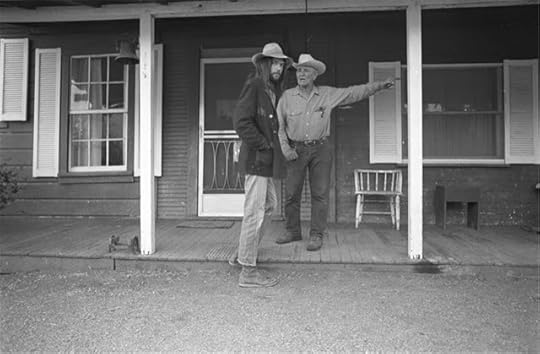 Old man, look at my life
Old man, look at my life24 and there's so much more
Live alone in a paradise
That makes me think of two
Love lost, such a cost
Give me things that don't get lost
Like a coin that won't get tossed
Rolling home to you
"You been hurt and you’re afraid a gettin' hurt again. You stay afraid you gonna end up alone. [Like me.] Thinking it was his choice but knowing it is true, that he does need someone to hold and love him, never throw him away."
Ah, one look in my eyes
And you can tell that's true

"You think you're so different ‘cuz you’re 24. You're not different. I maya just come with the place, but I can tell a fool, even if he owns the place. Now, get yerself inta town."
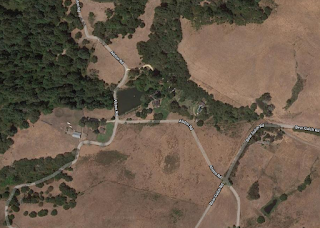 And, being a fool, though he knew everything the man said was true, he didn't make it back to town. And time past and now the young man was the old man, an old man that came with the ranch.
And, being a fool, though he knew everything the man said was true, he didn't make it back to town. And time past and now the young man was the old man, an old man that came with the ranch.Doesn't mean that much to me
To mean that much to you
I've been first and last
Look at how the time goes past
But I'm all alone at last
Rolling home to you
50 years ago, Neil Young bought Broken Arrow Ranch. He's had the beautiful unspoiled property now for 50 years.
Published on August 07, 2020 06:19
August 4, 2020
Pop Art, Op Art and the Psychedelic Movement
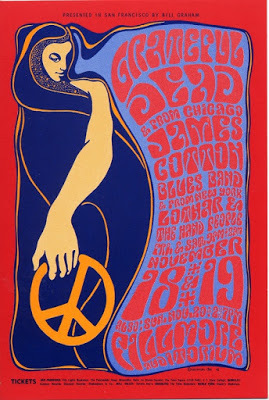 Wes WilsonPsychedelic: 1. adj. Pertaining to or characterized by hallucinations, distortions of perception and awareness, and sometimes psychotic behavior. 2. n. A drug that produces such effects. 3. An art style influenced by the prevalence of hallucinatory drugs, especially LSD, with typical designs featuring abstract swirls of intense color with curvilinear calligraphy reminiscent of Art Nouveau.
Wes WilsonPsychedelic: 1. adj. Pertaining to or characterized by hallucinations, distortions of perception and awareness, and sometimes psychotic behavior. 2. n. A drug that produces such effects. 3. An art style influenced by the prevalence of hallucinatory drugs, especially LSD, with typical designs featuring abstract swirls of intense color with curvilinear calligraphy reminiscent of Art Nouveau.The psychedelic movement began in the mid 1960's and had an effect, not just on music, but also on the way people spoke, on art, literature and philosophy. Posters for rock concerts visually emulated tripping out. The visual motifs included Art Nouveau-inspired curvilinear shapes, illegible hand-drawn type, and intense optical coloration inspired by the pop art movement ten years prior. The end of WWII in 1945 brought about a post-war economic boom in the U.S., and with it an enormous spike in the birth rate, the Baby Boom. Between 1945 and 1957 nearly 76 million babies were born in America. By the mid 60s, most of these kids were young adults. As young people do, "Baby Boomers" questioned America’s materialism and conservative cultural and political norms. During the 1960s a youth movement emerged, seeking to create an egalitarian society free from discrimination. The Feminist and the Civil Rights Movements were a direct result of this evolution. Americans in the 60s and 70s addressed many controversial issues — from human rights, the Vietnam War, nuclear proliferation, and the environment to drug use, sexual freedom, and nonconformity. Many young people sought spiritual experiences through Eastern Mysticism and psychedelic drugs.
 Victor MoroscoWes Wilson was one of the best-known designers of psychedelic posters. Most well known for designing posters for The Fillmore in San Francisco, he invented a style that is now synonymous with the peace movement, psychedelic era, and the 1960s. In particular, he is known for inventing and popularizing a psychedelic font that made the letters seem like they were moving or melting.
Victor MoroscoWes Wilson was one of the best-known designers of psychedelic posters. Most well known for designing posters for The Fillmore in San Francisco, he invented a style that is now synonymous with the peace movement, psychedelic era, and the 1960s. In particular, he is known for inventing and popularizing a psychedelic font that made the letters seem like they were moving or melting.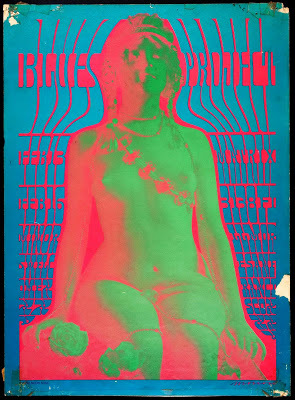 Victor MoscosoVictor Moscoso was a formally trained graphic designer who borrowed from comic books, Victorian images, Art Nouveau, and pop art. He used the concept of vibrating colors to create the psychedelic effect in many of his pieces. The vibration is achieved by taking colors from the opposite end of the color wheel, each one having equal value (dark to light) and intensity (brightness).
Victor MoscosoVictor Moscoso was a formally trained graphic designer who borrowed from comic books, Victorian images, Art Nouveau, and pop art. He used the concept of vibrating colors to create the psychedelic effect in many of his pieces. The vibration is achieved by taking colors from the opposite end of the color wheel, each one having equal value (dark to light) and intensity (brightness).Op art, short for Optical art, is a style of abstraction that relies on geometric shapes, lines, and color juxtapositions to create optical illusions for the viewer. Gaining popularity in the 1960s, such art often features patterns, grids, and effects like curving or diminishing objects. The Op art movement was driven by artists who were interested in investigating various perceptual effects.
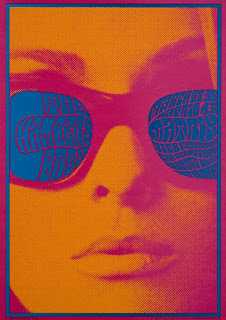 Wes WilsonPop is a term first applied to popular culture rather than to art, but it was one of the goals of the Pop Art Movement to blur the boundaries between "high" art and [low] popular culture. Pop Art was one of the major, intrinsically American, artistic movements of the 20th century. The phrase was coined in Britain in 1955 but unsurprisingly the Americans took up the consumerist cause with much greater effect and conviction, and became the pioneers of the movement. Pop Art (and Pop Culture) broke down the barriers between art and culture: packaging, television, advertisements, comic books, the cinema. Simultaneously, Pop Art emphasized the kitschy elements of popular culture as a protest against the elitist art culture and the pretentiousness surrounding it. It glorified unappreciated objects and ordinary business. In doing so, it aimed to make art meaningful for everyday people and came to target a broad audience. Although it gained many supporters for the way it was easy to comprehend, critics saw Pop Art as vulgar. The ideology of the Pop Artists, from Warhol to Rauschenberg opened up the doors for the hippie art of Mouse and Kelley, Wilson and Moscoso in America, and would soon inspire the likes of Martin Sharp, Nigel Waymouth and Michael English in Britain.
Wes WilsonPop is a term first applied to popular culture rather than to art, but it was one of the goals of the Pop Art Movement to blur the boundaries between "high" art and [low] popular culture. Pop Art was one of the major, intrinsically American, artistic movements of the 20th century. The phrase was coined in Britain in 1955 but unsurprisingly the Americans took up the consumerist cause with much greater effect and conviction, and became the pioneers of the movement. Pop Art (and Pop Culture) broke down the barriers between art and culture: packaging, television, advertisements, comic books, the cinema. Simultaneously, Pop Art emphasized the kitschy elements of popular culture as a protest against the elitist art culture and the pretentiousness surrounding it. It glorified unappreciated objects and ordinary business. In doing so, it aimed to make art meaningful for everyday people and came to target a broad audience. Although it gained many supporters for the way it was easy to comprehend, critics saw Pop Art as vulgar. The ideology of the Pop Artists, from Warhol to Rauschenberg opened up the doors for the hippie art of Mouse and Kelley, Wilson and Moscoso in America, and would soon inspire the likes of Martin Sharp, Nigel Waymouth and Michael English in Britain.
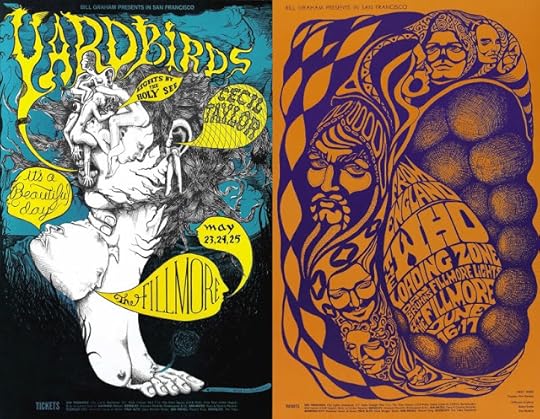
Published on August 04, 2020 07:08
Buy This Book - Calif.
You're here at AM because you love rock 'n' roll. In a time of turmoil and division, music is one of those cures that allow us to talk again. At AM, we're not about politics; there are enough websites and radio shows to do that - we're all about what we share, the music.
AM is supported by your readership and the sales of R.J. Stowell's rock-filled novels, Miles From Nowhere, and Calif.
With each page of Calif. you'll discover the world of rock 50 years ago. If you were there, you get to relive it. If you weren't, you get the experience for the first time. It's a win-win situation.
Calif., the standalone sequel to Miles From Nowhere is now available on Amazon for just $9.99 and also available for your Kindle at $4.99.
And remember, you can read Calif. FREE on your Kindle with Kindle Unlimited, which is free for the first month. Read all your faves, from Lord of the Rings to Jane Austen to Harry Potter for just a small fee per month.
In Miles From Nowhere, our hero takes a 3000-mile trek across 60's America to see his idol, Jimi Hendrix, at Woodstock. His poor health and America do nothing but get in the way. In Calif., Miles is back, alive and kicking, but it wasn't easy. Here you'll find the rest of Miles' story.
Get your signed copy for just $15.00 including shipping by sending us an email at rjsomeone@gmail.com.
Or click here for Amazon.
Help support the AM network and keep us on the air and on the web. And don't forget to join us on Facebook.
AM is supported by your readership and the sales of R.J. Stowell's rock-filled novels, Miles From Nowhere, and Calif.
With each page of Calif. you'll discover the world of rock 50 years ago. If you were there, you get to relive it. If you weren't, you get the experience for the first time. It's a win-win situation.
Calif., the standalone sequel to Miles From Nowhere is now available on Amazon for just $9.99 and also available for your Kindle at $4.99.
And remember, you can read Calif. FREE on your Kindle with Kindle Unlimited, which is free for the first month. Read all your faves, from Lord of the Rings to Jane Austen to Harry Potter for just a small fee per month.
In Miles From Nowhere, our hero takes a 3000-mile trek across 60's America to see his idol, Jimi Hendrix, at Woodstock. His poor health and America do nothing but get in the way. In Calif., Miles is back, alive and kicking, but it wasn't easy. Here you'll find the rest of Miles' story.
Get your signed copy for just $15.00 including shipping by sending us an email at rjsomeone@gmail.com.
Or click here for Amazon.
Help support the AM network and keep us on the air and on the web. And don't forget to join us on Facebook.
Published on August 04, 2020 05:16



